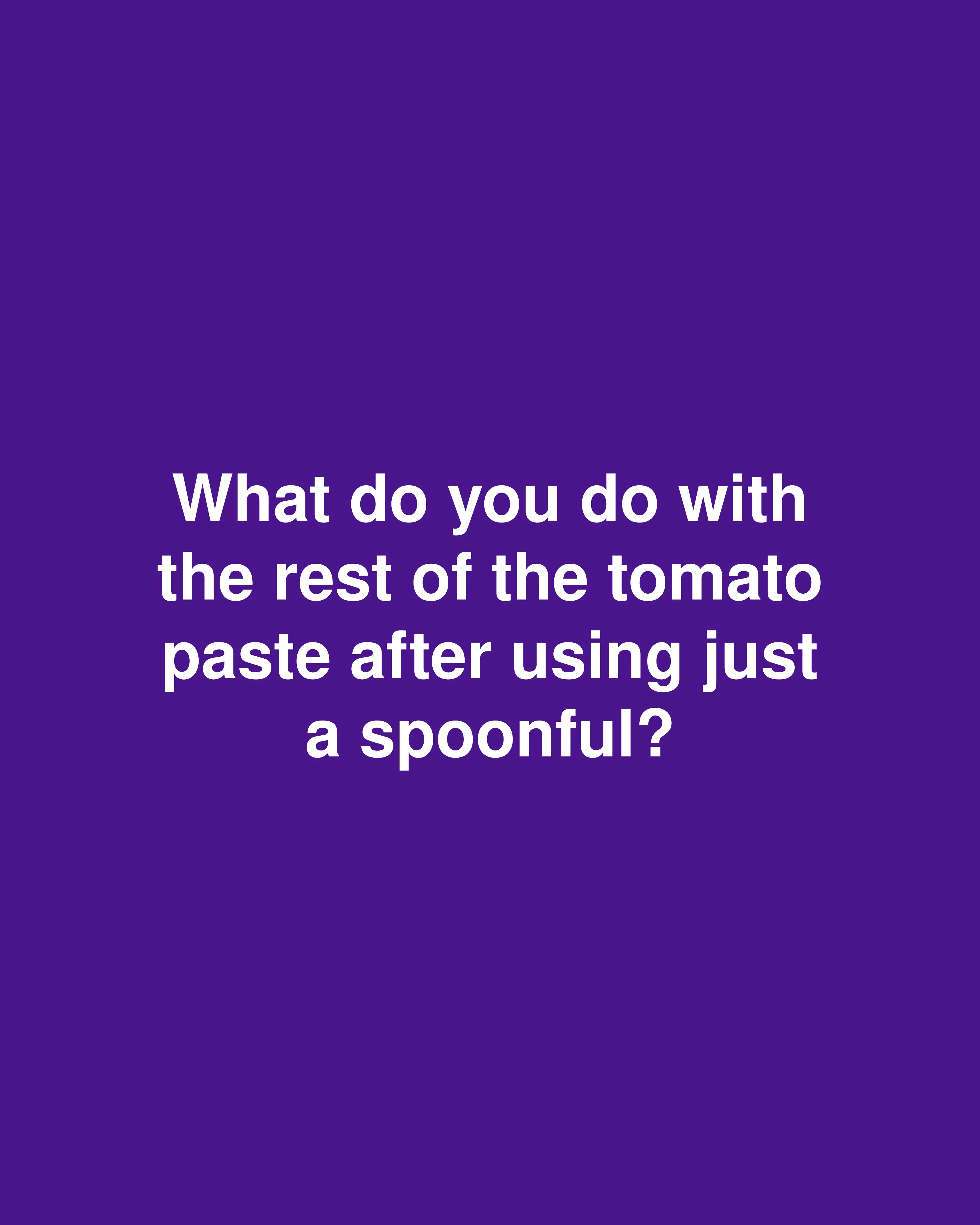Want to save this recipe?
Enter your email below and we’ll send the recipe straight to your inbox!
The Tomato Paste Dilemma: 10 Brilliant Ways to Use Every Last Bit
We’ve all been there. A recipe calls for just a tablespoon of tomato paste, and suddenly you’re left with an awkward amount in a can or tube that seems destined for the back of your refrigerator—until it eventually spoils and gets tossed out. What if I told you that leftover tomato paste could become your secret kitchen weapon instead of kitchen waste?
Why Tomato Paste Deserves a Second Life
Tomato paste is essentially concentrated flavor magic in a container. It’s packed with umami—that deep, savory taste that makes food more satisfying and complex. Each tablespoon contains the essence of several fresh tomatoes, with a concentrated sweetness and acidity that can transform ordinary dishes into extraordinary ones.
Before we dive into creative uses, let’s address the storage issue. The best way to preserve leftover paste is to freeze it in tablespoon portions using an ice cube tray. Once frozen, transfer the cubes to a freezer bag, and you’ll have pre-measured amounts ready whenever you need them. For shorter storage, transfer remaining paste to an airtight container and refrigerate for up to a week.
10 Creative Ways to Use Leftover Tomato Paste
1. Transform Basic Soups into Restaurant-Worthy Creations
Next time you’re making vegetable or beef soup, try this chef’s trick: sauté onions and garlic first, then add a tablespoon of tomato paste and cook for 1-2 minutes until it darkens slightly. This simple step caramelizes the sugars in the paste, unlocking deeper flavors that will infuse your entire soup. Even a plain chicken broth can be elevated this way without making it taste obviously “tomato-y.”
2. Create Quick Pasta Sauce in Minutes
For a simple yet flavorful pasta sauce, sauté 2 tablespoons of tomato paste with olive oil, minced garlic, and herbs. Add a splash of wine or broth, simmer briefly, and finish with a pat of butter for silkiness. This concentrated sauce clings beautifully to pasta and delivers more intense flavor than many jarred sauces.
3. Elevate Your Homemade Pizza Game
Mix 3 tablespoons of tomato paste with 2 tablespoons olive oil, 1 minced garlic clove, oregano, and a pinch of sugar. This creates a pizza sauce with deeper flavor than many traditional versions. The concentrated nature of the paste means your pizza won’t get soggy, and the flavors will shine through even after baking.
4. Add Depth to Chili and Casseroles
A tablespoon or two of tomato paste stirred into chili or casseroles at the beginning of cooking adds richness without additional liquid. The concentrated flavor acts as a background note that makes all the other ingredients taste more harmonious. For vegetarian chili, tomato paste adds the umami depth that meat would typically provide.
5. Create Flavor-Packed Marinades
Mix tomato paste with olive oil, balsamic vinegar, minced garlic, and herbs for a marinade that will transform ordinary chicken or vegetables. The natural acids in the paste help tenderize meat while adding flavor. For pork or beef, add a teaspoon of brown sugar to balance the acidity and create beautiful caramelization when grilling.
6. Upgrade Your Dips and Spreads
Stir a teaspoon of tomato paste into hummus for a Mediterranean-inspired variation, or blend it with cream cheese and herbs for a savory bagel spread. The concentrated flavor adds complexity without overwhelming the base. For party appetizers, mix it with Greek yogurt, garlic, and herbs for a tangy dip that pairs beautifully with vegetables or pita chips.
7. Make Your Own Gourmet Condiments
Create homemade ketchup by simmering tomato paste with vinegar, brown sugar, and spices—adjusting to your preferred sweetness and spice level. For BBQ sauce, add molasses, Worcestershire sauce, and liquid smoke to tomato paste for a complex flavor base that beats store-bought versions.
8. Add Savory Notes to Baked Goods
This might sound unconventional, but a tablespoon of tomato paste can add moisture and depth to savory breads and muffins. Try adding it to cheese scones or herb focaccia for a subtle umami boost that will have people wondering what your secret ingredient is.
9. Create Flavorful Rice and Grain Dishes
Stir a tablespoon of tomato paste into the cooking water for rice, quinoa, or other grains. The paste will infuse the grains with a subtle flavor and beautiful color. This works particularly well for Spanish rice or as a base for grain bowls.
10. Enhance Roasted Vegetables
Toss cubed root vegetables with a mixture of olive oil, tomato paste, and herbs before roasting. The paste caramelizes in the oven, creating delicious crusty edges and adding depth to vegetables like carrots, potatoes, and parsnips.
Common Mistakes to Avoid with Tomato Paste
Not cooking it first: Raw tomato paste can taste acidic and one-dimensional. Taking an extra minute to sauté it until it darkens slightly develops its complex flavors.
Using too much: Tomato paste is concentrated, so a little goes a long way. Start with small amounts and add more if needed.
Improper storage: Leaving paste in an opened can can impart metallic flavors. Always transfer leftover paste to glass or plastic containers.
Extra Benefits Beyond Flavor
Health advantages: Tomato paste contains lycopene, a powerful antioxidant that becomes more bioavailable when cooked. Studies suggest lycopene may support heart health and reduce certain cancer risks.
Budget-friendly: Making the most of tomato paste reduces food waste and stretches your grocery budget. One $1-2 tube or can can enhance dozens of meals when used creatively.
Convenience factor: Having tomato paste on hand means you can add complex flavor to simple ingredients without needing fresh tomatoes or lengthy cooking times.
Expert Tips for Tomato Paste Mastery
Professional chef Maria Rodriguez recommends: “Bloom your tomato paste in hot oil until it turns from bright red to a deeper brick-red color. This 2-3 minute step develops the sugars and transforms the flavor from flat to complex.”
Food scientist Dr. James Chen notes: “Tomato paste contains natural glutamates that enhance other flavors in your dish—similar to MSG but completely natural. This makes it perfect for deepening flavor in vegetarian dishes that might otherwise lack depth.”
Quick Recap: Making the Most of Every Bit
Tomato paste is a versatile ingredient that deserves better than being forgotten in your refrigerator. With proper storage and these creative applications, you can transform this humble ingredient into countless delicious meals. The concentrated flavor adds depth and complexity that would otherwise require longer cooking times or more ingredients.
Next time you open a can or tube, remember these techniques and experiment with your own combinations. Your taste buds—and your wallet—will thank you for making the most of every last bit.
Frequently Asked Questions
Can I use tomato paste instead of tomato sauce?
Yes, but you’ll need to dilute it. Mix one part tomato paste with two parts water to approximate tomato sauce, then adjust seasonings as needed.
How can I tell if tomato paste has gone bad?
Discard tomato paste if you notice mold, an off smell, or darkening beyond its normal color. When properly stored, it should last about 5-7 days in the refrigerator or up to 3 months when frozen.
Is tomato paste healthier than fresh tomatoes?
While fresh tomatoes contain more vitamin C, tomato paste actually contains higher concentrations of lycopene, which becomes more bioavailable through the cooking process used to create paste.
Can I make my own tomato paste?
Absolutely! Simmer peeled, seeded tomatoes until they reduce to a thick paste, stirring frequently to prevent burning. This takes several hours but results in exceptional flavor.


